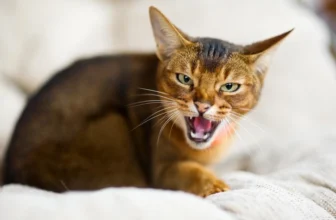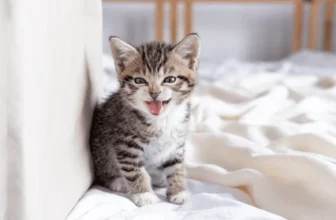Are you feeling frustrated by your American Wirehair’s constant meowing? Are you struggling to get a good night’s sleep because of their noisy behavior? You’re not alone. Excessive meowing in cats can be a problem for many pet owners and can lead to stress and disrupted routines. But don’t worry, there are steps you can take to train your American Wirehair to meow less. In this article, we’ll explore the root causes of excessive meowing and provide step-by-step guidance on how to use positive reinforcement, physical and mental stimulation, and routine to encourage quiet behavior and discourage unwanted meowing.
Identify the Root Cause of Excessive Meowing
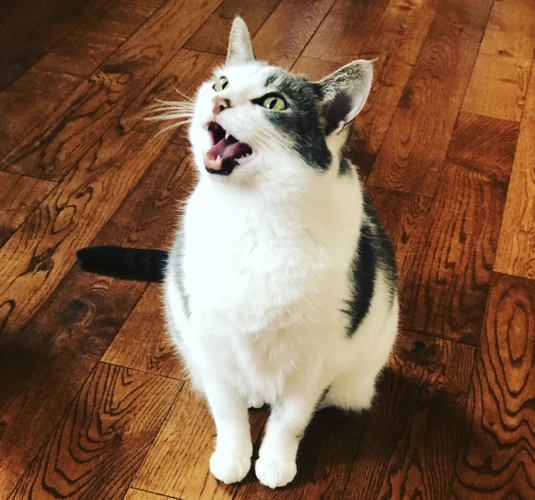
You love your American Wirehair, but their constant meowing can be frustrating. Before you start training your feline friend to meow less, it’s crucial to understand why they’re meowing excessively. Identifying the root cause of your American Wirehair’s excessive meowing can be the key to successfully reducing it and creating a more peaceful environment for both you and your furry companion. By assessing their environment, consulting with a veterinarian, and understanding their behavior, you can determine why your American Wirehair is meowing excessively and take appropriate steps to address it. Let’s dive deeper into this topic.
[excessive meowing in American Wirehairs]
Assessing Your Cat’s Environment and Behaviors
Assessing Your Cat’s Environment and Behaviors
One of the crucial steps in training your American Wirehair to meow less is to assess its environment and behaviors. Understanding why your cat is meowing excessively is essential to formulate a training plan that works. Here are some factors to consider:
| Factors | Description |
| Medical conditions | Some medical conditions such as thyroid problems or diabetes could lead to excessive meowing. If you suspect a medical issue, consult with your veterinarian immediately. |
| Separation anxiety | Does your cat meow excessively when left alone? Separation anxiety could be the cause. Providing your cat with toys and interactive activities could help reduce anxiety. |
| Body language | Your cat’s body language could provide clues as to why it is meowing excessively. Are its ears pinned back? Is its tail twitching? These could indicate physical discomfort or stress. |
| Environmental factors | Is your cat getting enough food and water? Is the litter box clean? Is it too hot or cold? These environmental factors could contribute to excessive meowing as your cat tries to communicate its needs. |
| Playtime and exercise | Does your cat get enough playtime and exercise? Lack of physical and mental stimulation could lead to excessive meowing. Check out these tips on how to provide adequate stimulation for your cat. |
Identifying the root cause of your American Wirehair’s excessive meowing is the first step in training it to meow less. Once you have identified the underlying cause, you can start implementing positive reinforcement and environmental enrichment to encourage quiet behavior.
Consulting with a Veterinarian
Consulting with a veterinarian is an important step in addressing excessive meowing in American Wirehair cats. A professional can assess your cat’s overall health, behavior, and environment to determine if there are any underlying medical conditions contributing to the increased vocalization. In some cases, excessive meowing can be a symptom of anxiety, pain, or illness.
During a visit with the veterinarian, they will likely ask you questions about your cat’s meowing behavior, including how often and under what circumstances your cat meows excessively. They may also perform a physical examination and conduct any necessary tests to rule out any medical conditions.
If your cat is found to be in good health, the veterinarian may suggest specific tips or meowing management techniques to decrease your cat’s meowing behavior. They may also recommend behavioral therapy, medications, or environmental modifications to help improve your cat’s overall quality of life.
It’s important to note that excessive meowing can also be a result of separation anxiety in American Wirehair cats. A veterinarian can help you determine if this is the case and provide guidance on how to address it.
If you’re unsure whether your cat’s meowing behavior is normal or excessive, there are online resources available to help you determine whether or not your cat is meowing too much. However, it’s always best to consult with a veterinarian to ensure your cat’s health and well-being.
Use Positive Reinforcement to Encourage Quiet Behavior
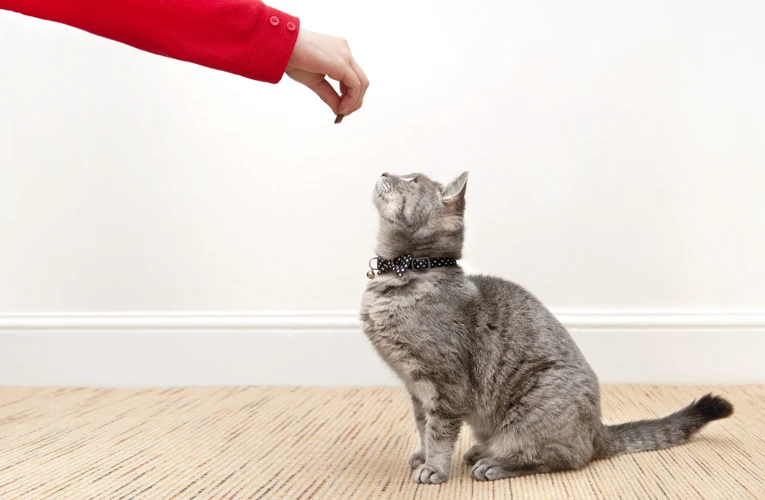
Pet owners love to hear their feline friends converse with them through a series of meows and purrs. However, excessive meowing from your American Wirehair can be bothersome and even worrying sometimes. It’s important to encourage good behavior in cats rather than punish them for bad behavior.
Fortunately, there are effective methods to encourage quieter behavior in cats through positive reinforcement. In this section, we will go over some effective ways to encourage quiet behavior in your American Wirehair without resorting to punishment or negative reinforcement. These tips and tricks are designed to create a happier and well-behaved feline family member.
Training with Treats
Training with treats can be an effective way to encourage desired behavior in your American Wirehair cat. The use of positive reinforcement is a powerful tool in training cats and can make training a fun and rewarding experience for both you and your pet. By offering treats when your cat exhibits quiet behavior, you can reinforce that behavior and increase the likelihood that it will be repeated in the future.
Here are the steps to train your American Wirehair using treats:
| Step | Description |
|---|---|
| 1 | Choose a quiet location for training. Distractions can make it difficult for your cat to focus on the training. |
| 2 | Choose a high-value treat that your cat loves. Small pieces of cooked chicken or freeze-dried fish are usually a hit with cats. |
| 3 | Start with short training sessions, around 5-10 minutes a day, and gradually increase the length of the sessions over time. |
| 4 | When your cat is meowing, wait for a moment of quiet and then immediately give them a treat. |
| 5 | If your cat continues to meow, wait for a longer period of quiet before offering a treat. This encourages longer periods of quiet behavior. |
| 6 | Repeat this process consistently over time, gradually increasing the amount of time your cat needs to exhibit quiet behavior before receiving a treat. |
It’s important to note that while treats can be a powerful tool in training your American Wirehair, they should be used in moderation. Overfeeding your cat can lead to obesity, which in turn can lead to a variety of health issues. Additionally, it’s important to choose healthy, nutritious treats for your cat. Speak with your veterinarian about appropriate treat options and feeding guidelines for your pet.
For more tips on dealing with excessive meowing in your American Wirehair, check out our American Wirehair Meowing Tips article.
Training with a Clicker
Clicker training is a popular positive reinforcement training technique that is widely used to teach for specific actions. It is an efficient way to establish communication and create a bond between you and your cat. This technique employs the use of a small handheld device called a “clicker” which makes a distinct sound when pressed. The sound signifies to the cat that they have done something right and will receive a reward.
To begin clicker training, the first step is to get your cat familiar with the sound of the clicker. You can do this by pressing the clicker and then immediately giving your cat a treat. Repeat this several times so that your cat associates the sound of the clicker with a reward.
Once your cat is associating the clicker with a reward, you can start using it to train them to stop meowing excessively. Whenever your cat meows loudly, wait for them to stop, and then immediately press the clicker and give them a treat. Repeat this every time your cat stops meowing loudly.
You can also try to prompt your cat to meow by using a verbal cue, such as saying, “speak.” When your cat meows after hearing the cue, immediately press the clicker and give them a treat. This will reinforce the behavior and encourage your cat to continue meowing on command.
Here’s a table to summarize the steps for training your American Wirehair to meow less using a clicker:
| Training with a Clicker | |
|---|---|
| Step 1 | Get your cat familiar with the sound of the clicker by pressing it and giving them a treat. |
| Step 2 | Wait for your cat to stop meowing excessively, press the clicker, and give them a treat. |
| Step 3 | Use a verbal cue, such as “speak” to prompt your cat to meow. Press the clicker when they meow and give them a treat. |
Using a clicker for training is an effective way to reinforce positive behavior and discourage unwanted behavior without resorting to punishment or negative reinforcement. However, it’s important to keep in mind that clicker training should always be done in conjunction with adequate mental and physical stimulation and a consistent routine. If your cat’s excessive meowing persists, it’s important to consult with your veterinarian to rule out any underlying medical conditions that may be causing the behavior.
For more information about medical conditions that can lead to meowing behavior in American Wirehairs, check out this article.
Training with Verbal Cues
When training your American Wirehair to meow less using verbal cues, it’s important to be consistent with your chosen command and tone of voice. Verbal cues should be short and easy to remember, such as “quiet” or “no meow”. Keep in mind that cats respond better to high-pitched or soft voices, so avoid using a stern or angry tone.
Here’s a table that outlines the steps to train your American Wirehair with verbal cues:
| Step | Action |
|---|---|
| Step 1 | Choose a short, consistent verbal cue for quiet behavior, such as “quiet” or “no meow”. |
| Step 2 | Use the verbal cue each time the American Wirehair starts to meow excessively. Say the cue in a high-pitched or soft tone to get the cat’s attention. |
| Step 3 | When the American Wirehair stops meowing, immediately reward the cat with a treat or praise. This reinforces the desired behavior of being quiet when given the verbal cue. |
| Step 4 | Repeat the training sessions until the American Wirehair begins to associate the verbal cue with being quiet. Eventually, the American Wirehair will respond to the cue without needing a reward. |
Using verbal cues can be one of the most effective methods for training your American Wirehair to meow less, as consistency and patience are key. However, keep in mind that verbal cues should be used in conjunction with positive reinforcement and adequate physical and mental stimulation for best results. By applying a combination of these techniques, you can help your American Wirehair become a quieter and happier pet.
If you want to learn more about American Wirehair’s body language, check out our article about Understanding Your American Wirehair’s Body Language. And if your cat is still meowing excessively even after training, read our article on Why Your American Wirehair is Meowing Excessively and How to Stop It for additional tips and advice.
Provide Adequate Physical and Mental Stimulation
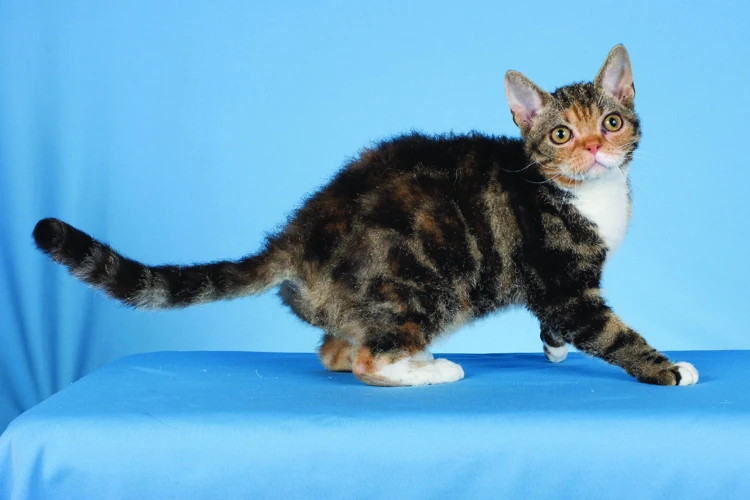
Now that we have identified the root cause of your American Wirehair’s excessive meowing and have started training them to meow less, it’s time to address their physical and mental stimulation needs. Simply put, a bored cat is a meowing cat! Providing adequate physical and mental stimulation is crucial in promoting healthy behavior and reducing excessive vocalization. Let’s dive deeper into how you can improve your cat’s environment and ensure they are happy and engaged.
Interactive Playtime Sessions
One effective way to train your American Wirehair to meow less is by providing them with adequate physical and mental stimulation through interactive playtime sessions. Here are some ideas for interactive playtime sessions that can keep your cat entertained:
- Hide and Seek: Hide treats around the house and encourage your cat to find them. This game not only stimulates their mind but also provides physical exercise as they move around searching for treats.
- Chase: Use a string or toy to entice your cat to chase and pounce on it. This game also provides great physical exercise and can help burn off excess energy, ultimately leading to less meowing.
- Interactive Toys: Provide your cat with interactive toys such as puzzle feeders, which can help keep them engaged and mentally stimulated while eating their meals.
- Fetch: Some cats can be trained to play fetch and will enjoy chasing and retrieving toys. This game provides physical exercise and can help tire your cat out, leading to less meowing.
It’s important to note that interactive playtime sessions should be tailored to your individual cat’s preferences and abilities. Some cats may prefer more physical play while others may enjoy interactive toys that challenge their problem-solving skills.
In addition to providing physical and mental stimulation, interactive playtime sessions also give your cat a positive outlet to release their energy and frustration, which can ultimately lead to less meowing.
Environmental Enrichment Activities
Cats are curious creatures who love to explore their environment, play, and relax. Environmental enrichment activities are great ways to keep your American Wirehair cat occupied and entertained. Here are some ideas that you can use to provide your feline friend with a stimulating environment:
- Vertical spaces: American Wirehairs are climbers and enjoy being able to survey their surroundings from above. Set up tall cat trees or install wall shelves to give your cat a space to climb and jump.
- Scratching posts: Provide your cat with multiple scratching posts throughout your home. This will help your cat to fulfill their natural scratching behavior and prevent furniture damage.
- Toy variety: Cats love a variety of toys, so make sure to have a collection of different textures, shapes, and sizes. Rotate the toys regularly to maintain their interest.
- Hide-and-seek: Create hiding spaces using cardboard boxes or blankets to encourage play and exploration. You can also scatter treats in the hiding spots to encourage your cat to search for them.
- Windows: Cats love to look outside and watch the world go by. Provide your American Wirehair with a space near a window or install a bird feeder outside for them to enjoy.
- Catnip: Some cats love catnip and it can make a great addition to their playtime. You can give your American Wirehair plush toys filled with catnip or sprinkle some catnip on their scratching posts.
- Food puzzle toys: Food puzzle toys can provide mental stimulation while also satisfying your cat’s hunger. These toys require some problem-solving skills and persistence to access the food inside.
Keep in mind that not all cats enjoy the same activities. Experiment with different environmental enrichment ideas to find what your American Wirehair likes best. Providing various forms of stimulation can help reduce excessive meowing due to boredom and provide your cat with a happy and healthy life.
Set Up a Consistent Routine
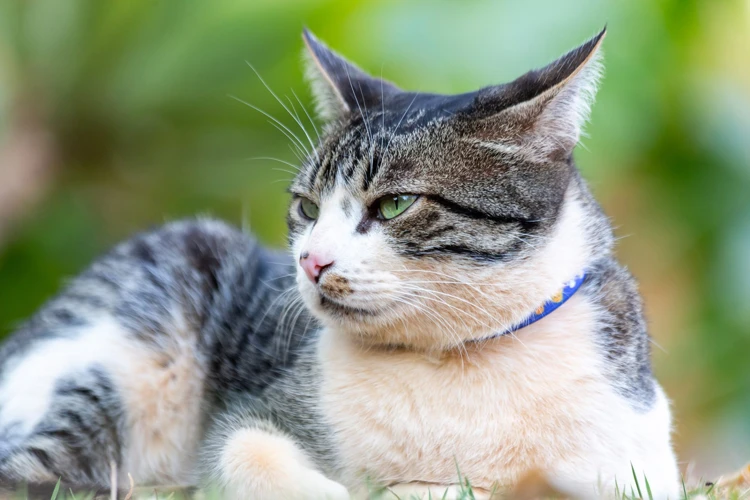
Establishing a consistent routine is essential for both humans and animals, and it is especially important for cats. Creating a predictable daily routine for your American Wirehair can help reduce excessive meowing by providing structure and stability. In this section, we will cover several key aspects of setting up a consistent routine, including scheduling feeding times, establishing a playtime routine, and maintaining consistent rules and boundaries. Incorporating these practices into your cat’s daily life can help keep them happy, healthy, and content. Let’s explore each of these in more detail.
Scheduling Feeding Times
Establishing a consistent feeding schedule for your American Wirehair is an important part of their overall health and well-being. By feeding your cat at around the same times each day, you can help regulate their appetite and also help reduce excessive meowing.
Here are some tips for scheduling your cat’s feeding times:
- Determine the appropriate amount of food: Consult with your veterinarian to determine how much and how often you should be feeding your cat. This can vary based on your cat’s age, weight, and activity level.
- Divide their daily food into appropriate meals: Based on the amount of food you should be feeding your cat each day, divide this into appropriate portions for each meal. This will depend on how many meals you plan on feeding them each day.
- Choose feeding times that work for both of you: Try to choose times that work best within your own schedule, while also being consistent for your cat. It’s recommended to feed cats at least twice a day, usually morning and evening.
- Stick to a routine: Once you have established your cat’s feeding schedule, try to stick to it as closely as possible. This helps your cat learn when to expect their meals and can reduce their meowing during times when they would typically be feeding.
- Use puzzle feeders: To provide additional mental stimulation, you can use puzzle feeders to make your cat work for their food. This can also help slow down your cat’s eating, which can prevent overeating and obesity.
- Monitor your cat’s weight and adjust as needed: As your cat ages or becomes more or less active, their dietary needs may change. Monitor your cat’s weight and consult with your veterinarian if you need to adjust their feeding schedule or portions.
By following these tips and establishing a consistent feeding schedule, you can help reduce your American Wirehair’s excessive meowing behavior and provide them with the proper nutrition they need for a healthy life.
Establishing a Playtime Routine
One effective way to help train your American Wirehair to meow less is to establish a consistent playtime routine. By setting aside dedicated play sessions for your feline friend, you can help them exert energy and engage in natural behaviors in a structured and healthy way. Here are some tips for establishing a successful playtime routine:
- Choose a consistent time of day: Select a time of day that works best for both you and your cat and stick to it as much as possible. Consistency is key in helping your cat understand when it’s time to play and when it’s not.
- Keep play sessions short and frequent: Rather than one long play session, try breaking it up into shorter, more frequent playtimes throughout the day. This can help prevent boredom and overstimulation, leading to less meowing overall.
- Rotate toys: Keep things exciting by rotating your cat’s toys every few play sessions. This can prevent toy fatigue and make playtime more engaging for your cat.
- Engage in interactive play: Use toys that encourage your cat to run, jump, and chase. Wand toys with feathers or strings, laser pointers, and treat-dispensing toys can all be great options for interactive play sessions.
- End playtime on a calm note: Before ending a play session, engage in some quiet, relaxing play to help your cat wind down and avoid overstimulation. This could mean simply petting them or playing with a quieter toy.
By establishing a consistent playtime routine that includes interactive play sessions, you can help your American Wirehair burn off energy and engage in natural behaviors in a structured way, leading to less meowing overall. Remember to keep play sessions short and frequent, rotate your cat’s toys, and end on a calm note to maximize the benefits of playtime.
Maintaining Consistent Rules and Boundaries
Consistency is key when it comes to training your American Wirehair to meow less. Maintaining consistent rules and boundaries will help reinforce proper behavior and make it easier for your cat to understand what behavior is acceptable. Here are some tips for maintaining consistent rules and boundaries:
- Set clear boundaries: Decide what behavior is allowed and what is not. For example, if you don’t want your cat on the counter, make sure to consistently enforce this rule.
- Communicate consistently: Use the same verbal cues and body language every time you want to reinforce a rule. This will help your cat understand what behavior you expect.
- Enforce rules consistently: Don’t let your cat get away with unwanted behavior sometimes and not others. For example, if your cat meows at the table during dinner, don’t give them food occasionally as this will only confuse them.
- Be patient: Training takes time, and it’s important to be patient and consistent to see results.
- Involve all household members: Make sure that everyone in the household is following the same rules when it comes to training your cat. Inconsistency can set back progress and make training more difficult.
By maintaining consistent rules and boundaries, you will be setting your American Wirehair up for success in their training and reducing excessive meowing over time.
Discourage Unwanted Meowing Behavior
As a pet owner, it can be frustrating when your American Wirehair won’t stop meowing, especially if it’s excessive and unwarranted. However, it’s important to understand that your cat’s vocalizations are their way of communicating with you and expressing their needs. While positive reinforcement is a great way to encourage quiet behavior, sometimes it’s necessary to discourage unwanted meowing behavior. In this section of the article, we’ll explore effective strategies for discouraging excessive meowing in American Wirehairs.
Avoiding Punishment and Negative Reinforcement
Punishing your American Wirehair for excessive meowing is not an effective long-term solution. In fact, it can make the problem worse by creating more anxiety and stress for your cat. Instead, focus on positive reinforcement to encourage good behavior.
Why Punishment is Not Effective
Punishing your cat for meowing excessively sends the wrong message. Your cat may not understand what they are doing wrong and may become more anxious and stressed, leading to further meowing. Additionally, using physical punishment or negative reinforcement techniques can harm the bond between you and your cat.
Alternatives to Punishment
Instead of punishment, try using positive reinforcement to encourage quiet behavior. Reward your cat with treats or praise when they don’t meow excessively. You can also try using a clicker to train your cat to be quiet on command.
Another effective method is to ignore your cat’s unwanted meowing behavior. Giving in to your cat’s demands can reinforce their meowing behavior, while ignoring them can encourage them to seek out other ways to communicate with you.
Using Deterrents as a Last Resort
If all else fails, you can use deterrent sprays or noise to discourage unwanted meowing behavior. However, this should only be used as a last resort, as it can create more stress and anxiety for your cat.
Instead, try to identify the root cause of your cat’s excessive meowing and address it through positive reinforcement, physical and mental stimulation, and a consistent routine. By avoiding punishment and negative reinforcement, you can create a happier and healthier relationship with your American Wirehair.
| Punishment and Negative Reinforcement | Alternatives |
|---|---|
| Can harm the bond between you and your cat. | Use positive reinforcement to encourage quiet behavior. |
| May not effectively address the root cause of excessive meowing. | Identify the root cause and address it through positive reinforcement, physical and mental stimulation, and a consistent routine. |
| Can create more anxiety and stress for your cat. | Ignore unwanted meowing behavior or use a deterrent spray or noise as a last resort. |
Ignoring Meowing Behavior
One way to discourage excessive meowing behavior in your American Wirehair is to ignore it. This may seem counterintuitive, but sometimes, your cat may just be seeking attention, and giving in to their demands only reinforces the behavior. It’s important to note that this should only be done after ruling out any potential medical or environmental issues that may be causing the excessive meowing.
Ignoring your cat’s meowing behavior can be difficult, but it’s important to remain consistent. Here are some tips for successfully ignoring your cat’s meowing:
| Tips for Ignoring Meowing Behavior |
|---|
| 1. Do not give in to demands. |
| 2. Avoid eye contact with your cat. |
| 3. Remain calm and silent. |
| 4. Wait until your cat is quiet to give them attention. |
| 5. Provide attention and rewards when your cat is quiet and exhibiting desired behavior. |
When your cat meows excessively, it’s easy to feel frustrated or annoyed, but it’s important to remember that your cat is simply communicating with you. By ignoring the unwanted meowing behavior and rewarding quiet behavior, you can train your American Wirehair to meow less and improve your relationship with your furry companion.
Using a Deterrent Spray or Noise
If positive reinforcement and environmental enrichment do not work, using a deterrent spray or noise can be an effective way to discourage unwanted meowing behavior in American Wirehairs. A deterrent spray works by emitting an unpleasant scent when sprayed near the cat, while a deterrent noise produces a loud, sudden sound that startles the cat and discourages the meowing behavior.
Deterrent Spray
A deterrent spray can be purchased at most pet stores or online retailers. Look for a spray that is specifically designed to deter cats. The spray should be safe and non-toxic for cats to breathe in and ingest. Some popular ingredients in deterrent sprays include citrus, bitter apple, and rosemary.
To use a deterrent spray, simply spray a small amount near the area where your cat is meowing excessively. It is important to avoid spraying directly on your cat or any surfaces that your cat may come into contact with, such as their food bowl or litter box. Spraying in the general area should provide enough of a deterrent to discourage meowing behavior.
Deterrent Noise
A deterrent noise can be created using a variety of household objects, such as a metal can filled with coins or a handheld air horn. When your cat begins to meow excessively, make a loud, sudden noise to startle them. This should interrupt the meowing behavior and discourage them from continuing.
It is important to note that while deterrent sprays and noises can be effective in discouraging meowing behavior, they should be used sparingly and as a last resort. It is always best to try positive reinforcement and environmental enrichment first, as these methods are more humane and can provide long-term solutions to excessive meowing in American Wirehairs. Additionally, it is important to avoid punishing or scolding your cat, as this can lead to further behavioral issues and damage the bond between you and your pet.
Conclusion
In conclusion, training an American Wirehair to meow less requires patience, dedication, and a thorough understanding of your cat’s behavior and environment. By identifying the root cause of excessive meowing and using positive reinforcement techniques, such as training with treats, a clicker, and verbal cues, you can encourage your cat to exhibit quieter behavior. Adequate physical and mental stimulation through interactive playtime sessions and environmental enrichment activities is also crucial in keeping your cat content and calm.
Setting up a consistent routine, including scheduling feeding times and establishing a playtime routine, can help reduce stress and anxiety in your cat, ultimately leading to less meowing. It is important to maintain consistent rules and boundaries to avoid confusion and frustration for both you and your cat.
Discouraging unwanted meowing behavior should be done through avoiding punishment and negative reinforcement, ignoring meowing behavior, and using deterrent sprays or noise only as a last resort.
Remember, every cat is unique and may require different training techniques. Consulting with a veterinarian can also provide important insights and guidance in training your American Wirehair to meow less. With time, patience, and a well-rounded approach, you can successfully train your cat to exhibit quieter behavior and create a peaceful and harmonious home for you and your furry companion.
Frequently Asked Questions
1. Why is my American Wirehair meowing excessively?
Excessive meowing in cats can be due to various reasons, such as feeling hungry, seeking attention, or experiencing anxiety or stress.
2. Can I train my American Wirehair to stop meowing completely?
No, it is not possible to completely stop a cat from meowing as it is one of their natural modes of communication. However, you can teach them to meow less frequently.
3. How long does it take to train an American Wirehair to meow less?
The duration of training depends on the unique personality and behavior of your cat. It could take anywhere from a few days to a few months to see significant improvement.
4. Can providing more food and treats help reduce meowing behavior in my American Wirehair?
Uncontrolled access to food and treats can lead to excessive weight gain and other health issues in cats. It is not a recommended solution for reducing meowing behavior.
5. Is it necessary to consult with a veterinarian for excessive meowing behavior in my American Wirehair?
It is always a good idea to consult with a veterinarian to rule out any underlying medical conditions that could be causing excessive meowing behavior in your cat.
6. How can interactive playtime help reduce meowing behavior in my American Wirehair?
Interactive playtime sessions help engage your cat’s natural hunting instincts and provide physical exercise. This helps them release excess energy and reduces the need to meow for attention.
7. Can I use punishment to discourage unwanted meowing behavior in my American Wirehair?
No, punishment can lead to fear and anxiety in your cat. It is not an effective or humane way to modify behavior.
8. How can I ignore the meowing behavior of my American Wirehair without feeling guilty?
Ignoring meowing behavior should be done when you are confident that your cat is safe and not in any distress. It is a way to communicate to them that excessive meowing will not yield results, and it may take some time for them to understand this.
9. Can I use a deterrent spray or noise to reduce meowing behavior in my American Wirehair?
Yes, if your cat responds well to these methods, they can be effective in reducing meowing behavior. However, it is important to use them sparingly and in combination with positive reinforcement techniques.
10. Should I try all the techniques mentioned in the article to train my American Wirehair to meow less?
You can try different techniques to see which ones work best for your cat. However, it is advisable to focus on one or two methods at a time and be consistent to avoid confusion and frustration in your cat.




